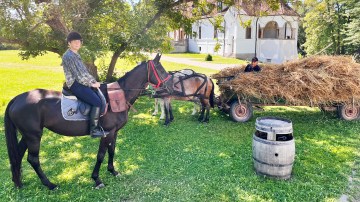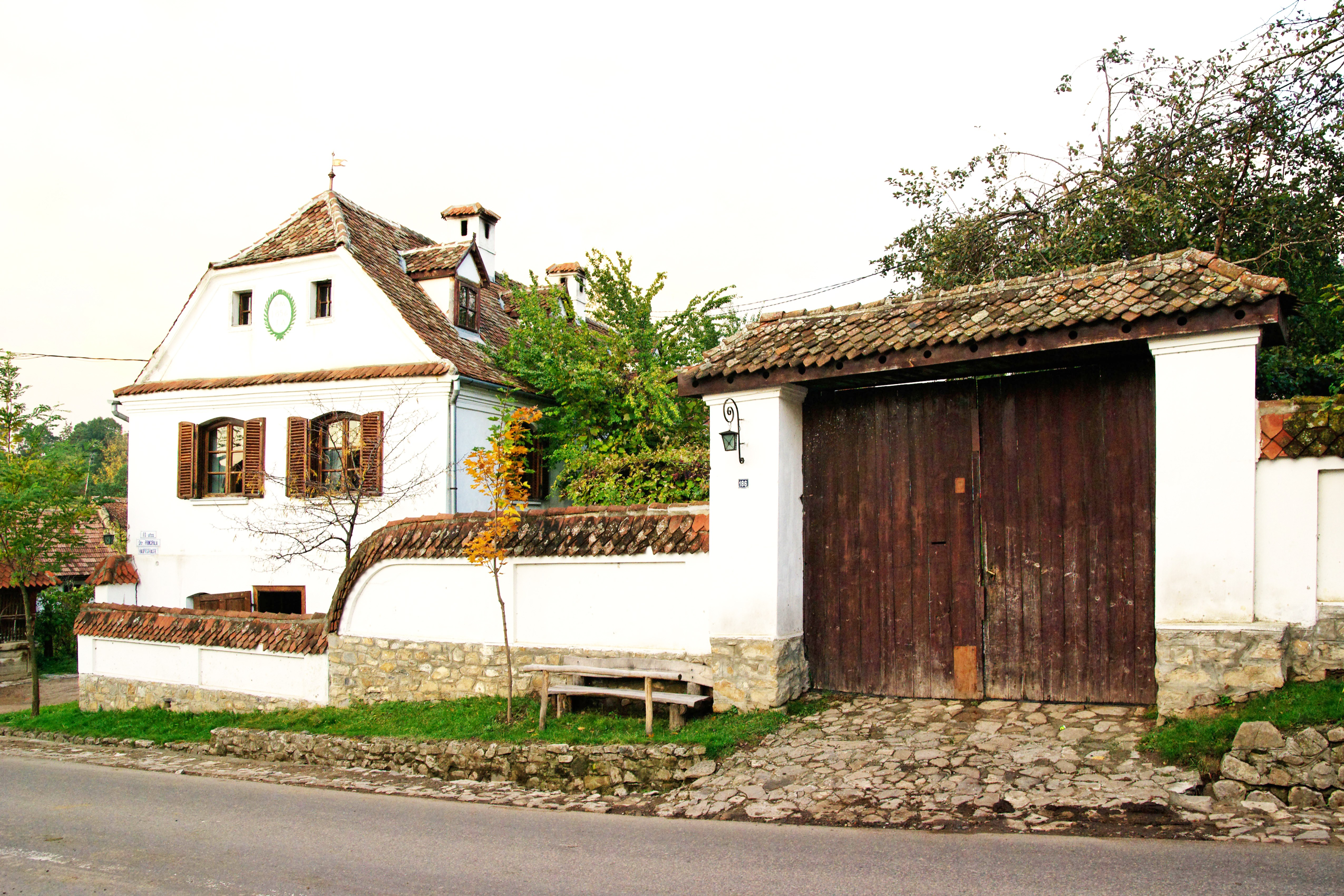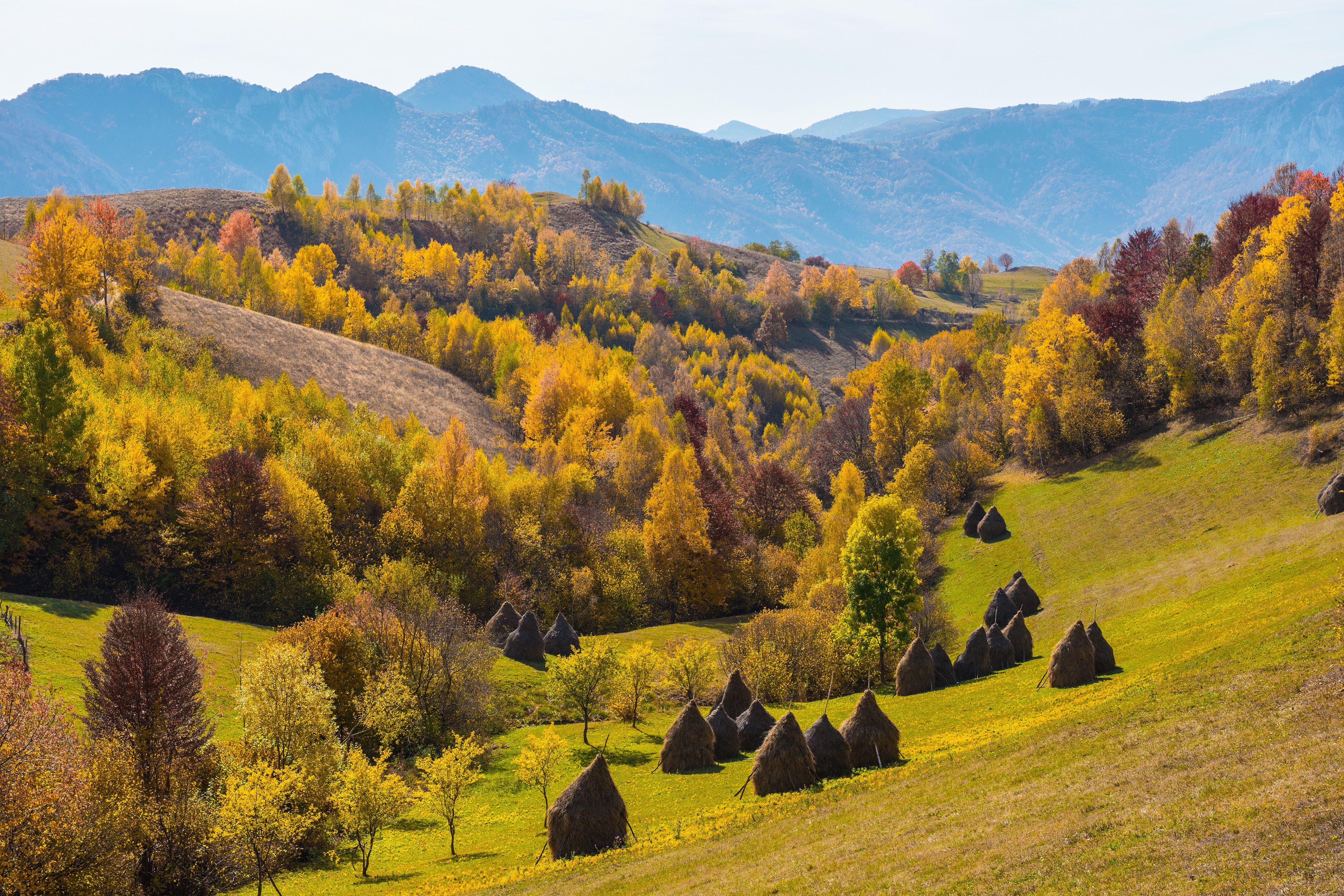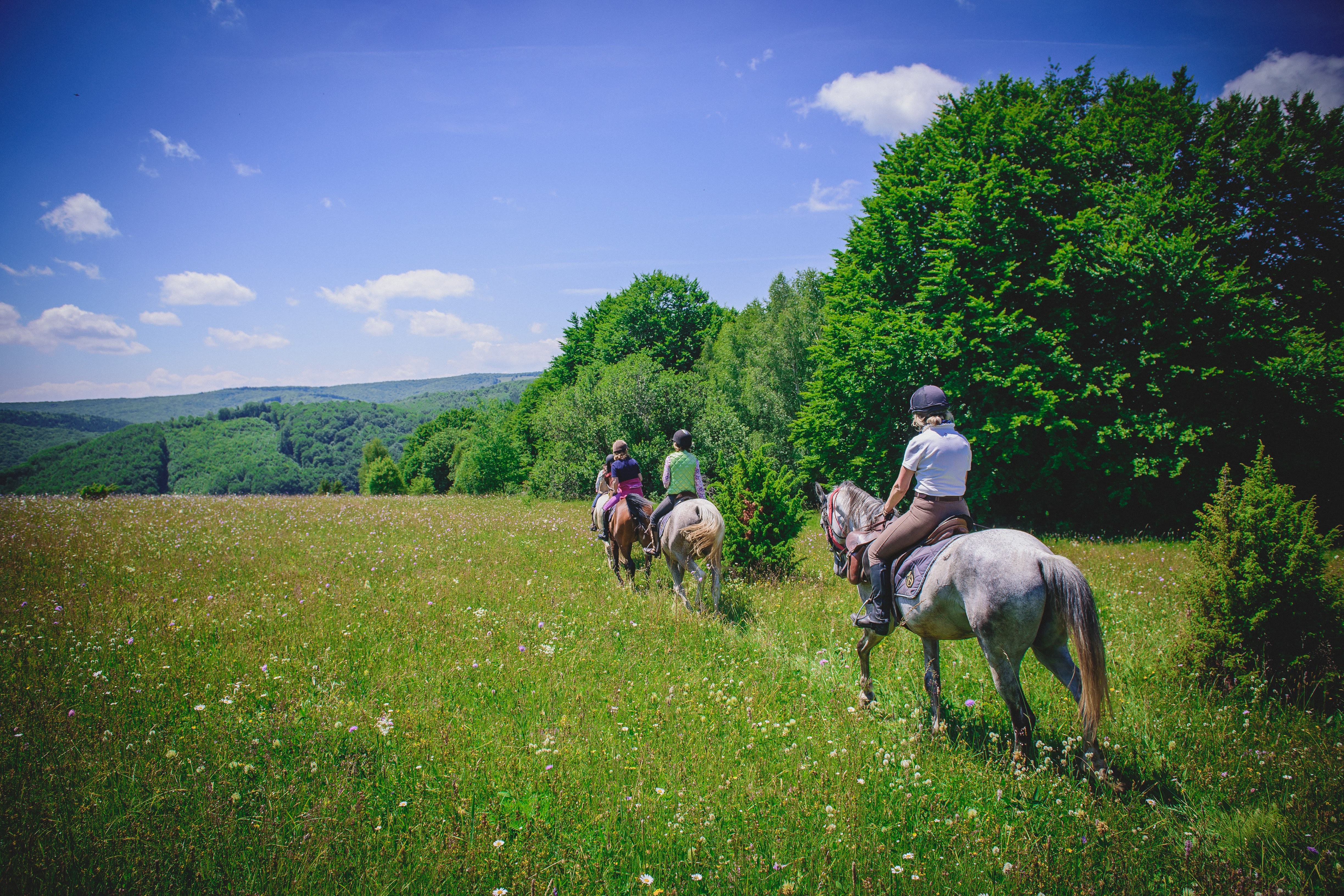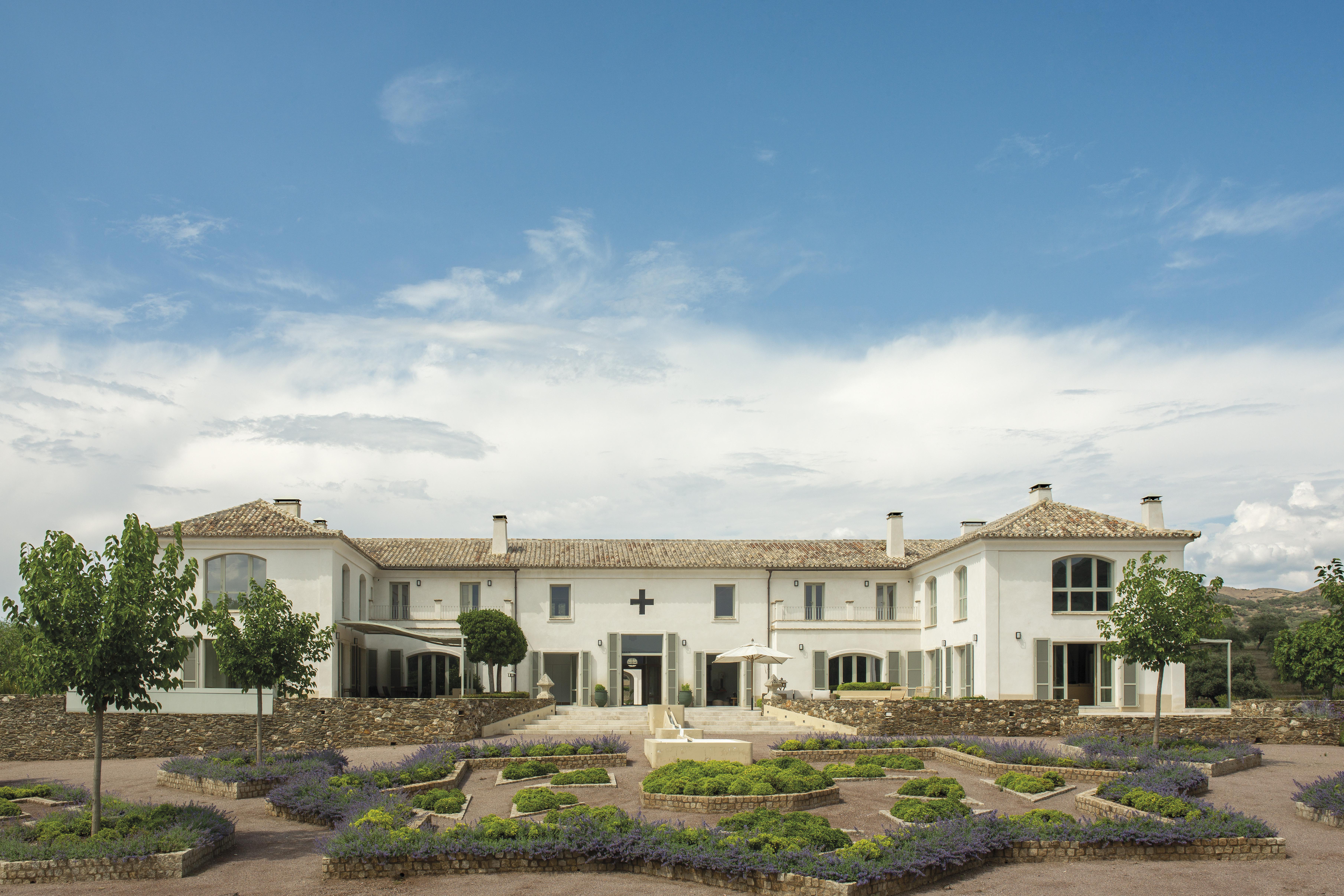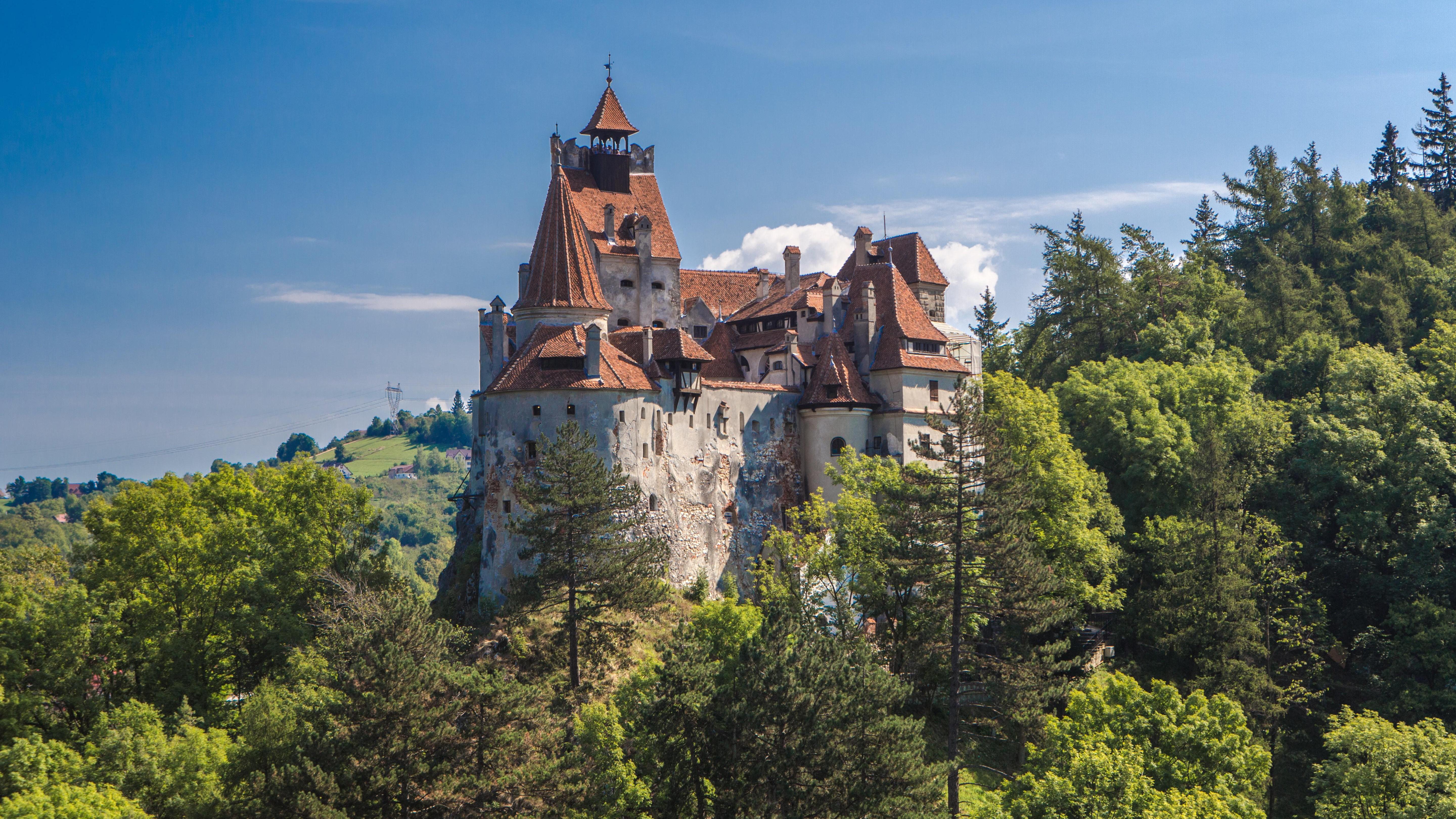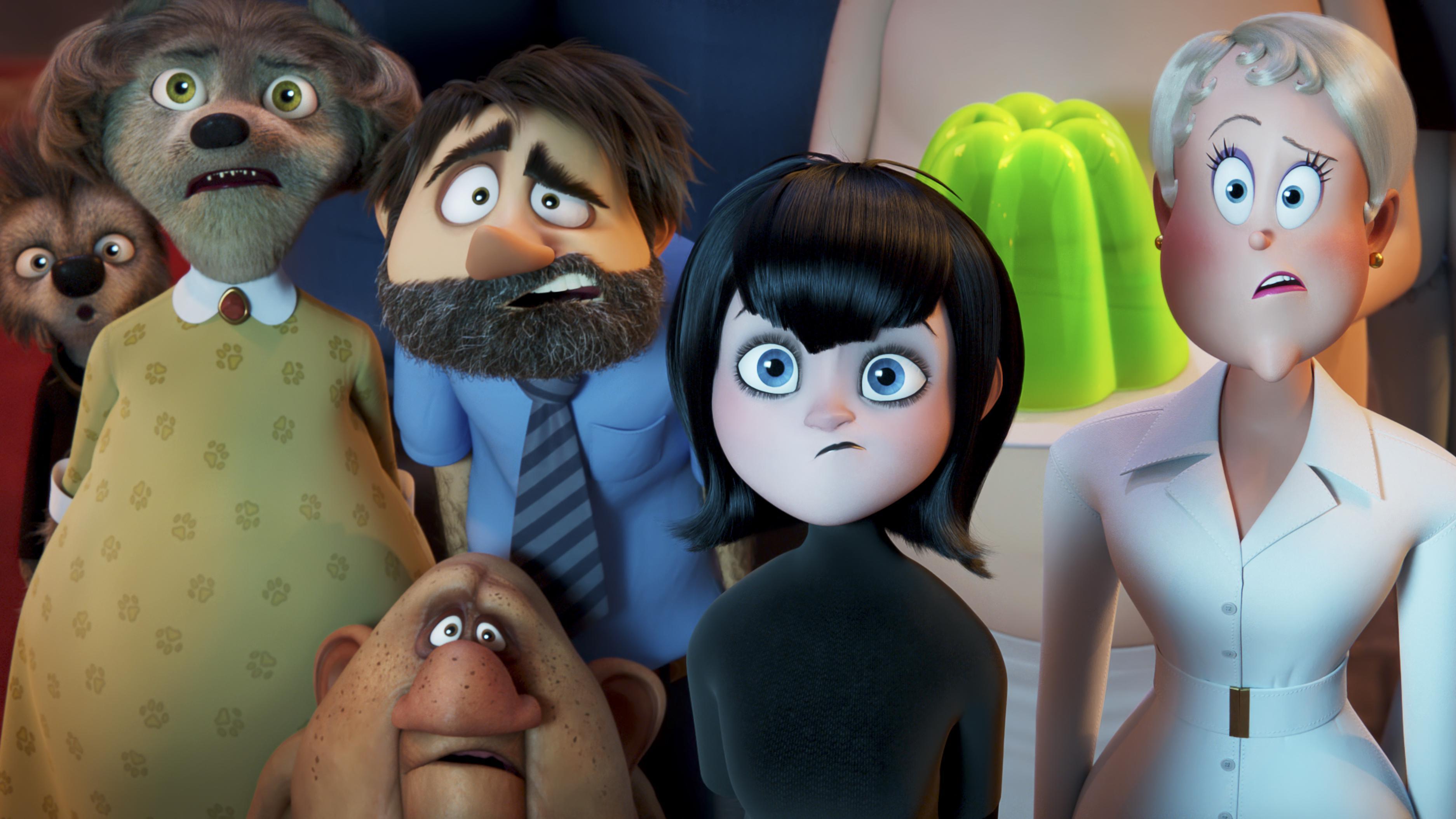‘Excuse me madam, why are you carrying a knife?” The security guard at Heathrow looked horrified as he extracted a blade from my case. “It’s for a riding holiday,” I tried to explain. “It’s on my kit list,” I added, as I yanked out my helmet and boots as proof. He called the manager who asked where I was going. Transylvania. He beamed: “I’m from Romania. Why are you riding? You know you can just rent a car there now.”
I couldn’t think of an answer. Why go riding when you can cover more ground with wheels and get more exercise walking? The weather forecast was for storms and lightning during my stay. I could take a few hailstones and I’d packed waterproofs, but it did seem eccentric to be spending six hours a day in a wet saddle. “I want to see the wildflower meadows, bears and haycarts,” I mumbled. “Only Count Dracula has a knife,” the security manager said, confiscating the offending weapon. “You’ll be fine; the bears are friendly and the horses will outrun the vampires.”
I’ve always ridden on holiday, from the highlands of Ethiopia to the volcanoes of Ecuador. I like horse people, and meandering cross-country and peering over walls, and I wanted to explore Transylvania faster than at an amble. The last time I went to Romania was on my first assignment as a journalist, to report on the fall of the communist leader Nicolae Ceausescu in 1989, and I’d fallen in love with the people. In 35 years, I had never returned, until my 19-year-old son heard about a modern count who led horseback bear hunts across Transylvania, and worked out that we could get flights with Wizz Air for £20.
Two weeks later we were leaving Bucharest airport in a rackety car, driving through mountain passes and fortified towns with no idea where we were heading. We ended up at our first night’s guest house in Miklosvar, a small village that once formed part of Count Kalnoky’s family estate, where they have recently restored their manor. The smattering of ancient cottages looked like an enchanted fairytale scene in the dusk. Inside there were wooden truckle beds, painted chairs, hand-embroidered sheets and a bottle of brandy with three glasses of differing heights on the table. Outside giant storks perched on their nest on top of a telegraph pole and the next morning, a cart arrived with pastries for the villagers, heralded by the sound of the cockerels.
After the eggs had been collected for our breakfast we drove to Valea Crisului, the riding centre at Korospatak, the count’s other, dilapidated, old family home which was destroyed during communism. Only the vast stables remain intact. Our guide, Matyas, Count Kalnoky’s 28-year-old son, soon arrived, surrounded by a pack of dogs. An elegant, otherworldly, melancholic figure, he looked like the lead in a Tolstoy play and spoke impeccable English, having endured a boarding school in the Lake District. He told us his favourite companions were books and the ghosts of his relatives. He disliked most people but loved horses and history. The Kalnokys set up their first regiment of Hussars in 1741, he explained, and he introduced us to a friendly farmer, also accompanying us to keep wolves at bay, who smiled as much as Matyas frowned.
Advertisement
This is Szekler country, inhabited by Hungarians said to be descended from Attila and the Huns, and they still speak Hungarian to each other, Matyas told us. His mother, Anna, the countess, grew up in Transylvania under Ceausescu, when horses were seen as bourgeois and the few that weren’t killed were kept in the zoo. “I would beg them to let me ride,” she said, and she soon learnt to somersault bareback on her steeds. Anna was tiny but terrifying. She grilled us on our personalities and riding proficiency, then took us outside to the ring. “It’s important to match the horses to the people.” Her horses were a fabulous mix of Shagya Arabian, Lipizzaner, the Hungarian Cavalry’s Gidran, Carpathian mountain ponies and the Turkmen Akhal-Teke — all picked for their speed, endurance, intelligence and manners, she told us. In other words, if the horses misbehaved it would be our fault. My son had a horse called Devil who behaved like an angel; mine was called something like Zena and liked eating cucumber. Equally important, the saddles had sheepskins and were as comfortable as armchairs.
The horses were the most beautiful I have ridden anywhere: sure-footed, relaxed, fast and calm. We were off by 9am, winding through the village on to a dirt track and out towards the hills. Within minutes we had reached the wildflower meadows. They looked as though they had been curated by Capability Brown — miles of grassland, scattered with ancient, gnarled oaks, alternating with copses of hazelnut and walnut trees, and woods full of beech, hornbeam and silver birch. This region is called Erdovidek, or “Woodlands”, and we didn’t see a tarmacked road, barbed wire, hedge, fence, gate, cottage or any sign of humans all day. The only obstacles were the occasional stream, the only fear the wolves — but we were so caught up in the fairytale that we were looking forward to seeing one and wouldn’t have been surprised if he’d asked us the way to grandma’s cottage.
It wasn’t until early evening that we came to the village of Baile Malnas, or “Raspberry Baths”, and finally saw a car, although not with its tyres intact. Our host for the night was a local hunter and beekeeper who didn’t see himself through rose-tinted glasses. He kept the TV firmly on as his wife doled out a hefty stew under the grapevines in the garden, and stomped about in his grey vest while Matyas asked if he could pick the wild strawberries in his field. Baile Malnas was a thriving spa at the end of the 19th century. Now the water looks sulphurous, the baths have been closed and Ceausescu’s old shooting lodge, still packed with stuffed bears, has been turned into a training camp for guide dogs.
On the morning of the second day, after breakfasting on homemade yoghurt and honey, we climbed up to the forests of the Hatod region, towards the perfectly named Batanii and Batanii Mici, meaning “Little and Big Bacon”. Matyas took us to the fortified 18th-century church in Little Bacon, where we were greeted by the vicar, who taught us yet more Szekler history. Next, we went to see the sculpture of Little Bacon’s most famous resident, the storyteller Benedek Flex, born in 1859, whose last words, according to a village noticeboard, were: “Work is what matters.” Farming here is hard work. The watermill still turns, grinding flour. We went for a traditional dinner at the schoolteacher’s house where she made us stuffed cabbage and cake in vast quantities.
Having saddled up the next morning, we headed for the hay meadows once more, climbing up to Szep Arca — “Pretty Face” — and the slopes of the Hargita range. From the top we could look out over the beautiful Barot and Olt valleys. Eventually we stopped by a lake surrounded by tumbledown cottages for a picnic. Children were playing, shrieking as they jumped on the haystacks and racing each other in carts up and down the dusty street. Constable could have painted the scene. In the afternoon, we followed the Olt river to return to Miklosvar’s manor grounds in the evening.
Advertisement
It’s hard not to feel nostalgic, until you pass the war memorials and remember that this country has been fought over for centuries, torn apart and dissected. There are no isolated farms because it was too dangerous. Homes are huddled together in fortified villages, each has its own strip of land nearby. We could have become spectacularly lost if Matyas hadn’t spent his life in these mountains. He admitted that Prince Harry had once arrived with his friends for a motorbike tour that had left the Romanian security detail floundering as they lost them in the maze of paths.
It never rained in the end. Every day was clear blue skies and 25C. The count’s son took full waterproofs. “I am a pessimist.” We saw bear paw prints in the woods one day so returned that night to a hide with a picnic, and scattered nuts in the undergrowth. Soon six bears were frolicking and pawing the ground. Almost as exciting was the birdlife: lesser-spotted eagles, bee-eaters, hoopoes and golden orioles.
Without roads and power lines, and with just the occasional glimpse of a Saxon church, the centuries merged and blended into the countryside. A sighting of an eagle or wild boar is still common. Each day when we stopped to take our picnic lunches from our saddlebags, we lay on the grass, inhaling the wild mint. Every evening our hosts would give us a welcoming toast of komenyes palinka, a strong spirit flavoured with cumin. The farmers practise an ancient form of farming. Some still scythe, sharpening their tools on large whetstones.
The King is obsessed with Transylvania and, for the final two nights, we meandered down from the ridge and stayed at his unpretentious farmhouse in Zalanpatak, which is several miles from the nearest tarmacked road, meeting an extraordinary mix of guests who wanted to see where the King came to relax after his coronation. There was a butcher from Somerset, a dental assistant from California and two backpackers from Berlin, one of whom slept in the King’s bed. The monarch has a personal connection — Countess Claudine Susanna Rhedey von Kis-Rhede, a Hungarian aristocrat, was his great-great-great-grandmother — but he also loves hiding away in this medieval bolthole, living a simple life among the haystacks.
The final canter took us to the ruins of the old tower above Korospatak and we were back where we had started. It was hard to leave. The horses had been immaculate, like riding an open-top Rolls-Royce but one that didn’t get stuck in the ruts. They never faltered, kicked out or shied in six days. They were so smooth, my son read a book while riding on some afternoons. We never had to urge them to canter or restrain them, we barely noticed when they jumped the occasional ditch. They could be ridden by a keen 10 or 70-year-old rider. Ours liked an apple at lunch and enjoyed being rubbed down at night. We weren’t even saddle sore. This was some of the best, most isolated riding in the world and it’s only three hours from the UK by plane. I want to come back in the snow.
Advertisement
Alice Thomson paid a discounted rate with Ride World Wide. Six nights’ full board from £1,285pp (rideworldwide.com). Fly to Brasov
More horseriding holidays
By Ellen Himelfarb
1. Wild rides on Dartmoor, Devon
Liberty Trails is so well connected with the horsey set of Dartmoor that some clients bring their own horses on its guided moorland excursions. Trips include a five-star stay and a two-day ride with the former Olympic equestrian Mary King. Freer spirits may prefer the three-night Horse & House Party in a country pile with a hot tub and infrared sauna. A chef oversees dinners using Devon produce.
Details Three nights’ full board from £1,950pp, including guided rides (liberty-trails.com)
2. Welsh forest loop
Advertisement
For capable riders able to handle steep terrain and five-seasons-in-a-day Welsh landscapes, Freerein’s self-guided Radnor Fforest loop trip has been running for more than three decades. The undulating route skirts the Welsh border and conquers Red Hill and the Begwns, climbing up to 600m over five days. You stay in private cottage lodgings on the way, with luggage transferred. Pace yourself on the route (and at the pub for lunch) and you’ll have no problem on the wild forest trails, with time to see ancient Welsh villages such as Bleddfa.
Details Four nights’ full board from £1,699pp (free-rein.co.uk)
3. Kyrgyzstan adventure
The writer and tour operator Alexandra Tolstoy is an authority on central Asia, particularly Kyrgyzstan’s Sary-Chelek nature reserve, where she organises riding journeys through the wildflower meadows, lakes and remote, vertiginous passes of the Tien Shan mountains. Kyrgyz horses are well accustomed to the rocky paths and steep descents, and the riding is suitable for the unaccomplished. Groups stop to swim in mountain rivers, shop in bazaars and eat goat kebabs prepared over an open fire, then sleep in a series of yurt camps.
Details Ten nights’ full board from £5,015pp (alexandratolstoy travel.com). Fly to Bishkek via Istanbul
4. Iceland’s backcountry
While the travelling hordes snake up the motorway along the Snaefellsnes peninsula, Equus Journeys’ Snaefellsnes Beach Trail trip takes you off-piste. You’ll cross lava fields to the glacier-covered Snaefellsjokull volcano, explore the deserted North Atlantic beaches and the quiet Hitardalur Valley. Days are long, so you’ll welcome a dip in the Rauoaneslaug pool on your penultimate day, as well as the farmhouse accommodation.
Details Seven nights’ full board from £2,085pp (equus-journeys.com). Fly to Reykjavik
Advertisement
5. Horseback safari in Botswana
Confident riders splash in the shallow waters at the western perimeter of the Okavango Delta alongside giraffes and hippos on Far and Ride’s eight-day Macatoo Safari, in Botswana. A watery haven for lions, baboons, elephants and buffaloes, the world’s largest inland delta is the setting for this trip’s candlelit dinners, champagne breakfasts under a baobab tree and one open-air night sleeping on a platform under the stars. You will spend up to six hours in the saddle a day, staying in a camp of private en suite tents.
Details Seven nights’ full board from £3,815pp, including guides and land transfers (farandride.com). Fly to Maun via Johannesburg
6. Rewilded Andalucian estate, Spain
The 5,000 acres of Caballo de Hierro, a traditional Andalucian finca in the Sierra de Aracena and Picos de Aroche natural park, have been rewilded by the property’s Spanish-Belgian owners. They’ve planted 4,000 oak trees, tended olive groves and left fields free for deer and boar to roam. Experienced riders canter across this landscape on the family’s eight thoroughbred Arabians.
Details Two nights’ all inclusive from £1,300pp (caballohierro.com).
Fly to Seville
7. Argentina’s Central Sierras
Give gaucho-style loose-rein riding a whirl on a 6,500-acre cattle ranch near Cordoba in Argentina’s Central Sierras. The Estancia Los Potreros offers trail riding up hillsides and into hidden valleys, stopping for waterfall swims. You’ll experience day-to-day life in cinematic villages and remote rural homesteads. Cattle drivers will teach you lasso techniques, a polo pro demonstrates matches and the ranch’s Peruvian paso horses are suitable for all levels.
Details Seven nights’ full board from £2,688pp, including transfers (estancialos potreros.com). Fly to Cordoba
Are you tempted by Transylvania? Let us know in the comments below
Sign up for our Times Travel newsletter and follow us on Instagram and X

